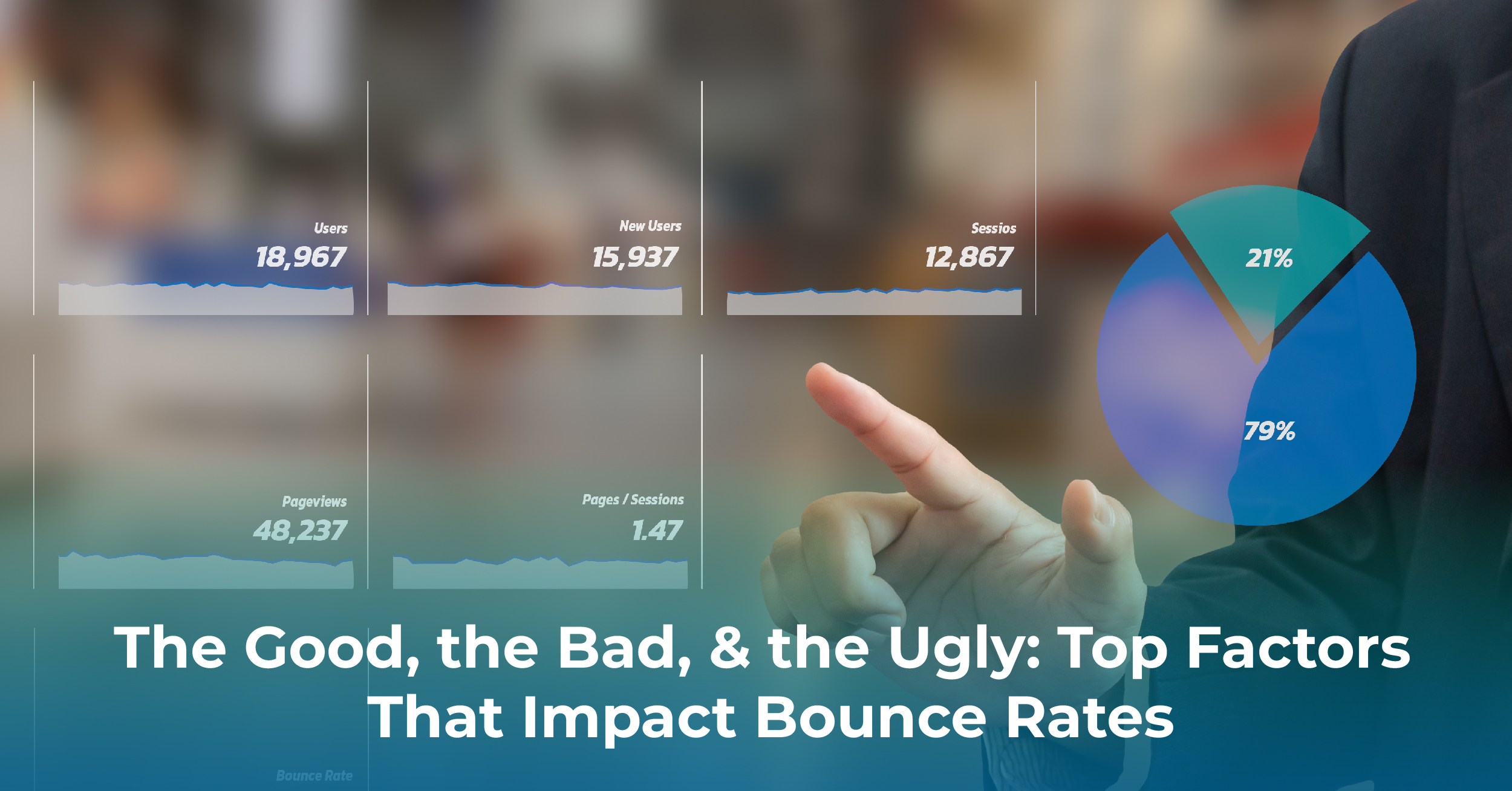Blog
The Good, the Bad, & the Ugly: Top Factors That Impact Bounce Rates
January 13, 2023
Posted by: DevDigital
Clear out, take off, and move on. In other words, leave quickly. There seem to be as many idioms for leaving as there are actual words because sometimes, we just need to bounce. But that is the one word that can drive business owners just a touch mad when paired with that other little word- rate.
Bounce rate
Your website’s bounce rate may feel like not being chosen for the team if the numbers are bouncing toward the stratosphere and no one wants that dismal gut punch. It can be overwhelming to juggle all the analytics that are determiners for online success but knowing the importance of scrutinizing your company’s website bounce rate and subsequently making adjustments that can lower its trajectory will likely help generate conversions.
What is a Bounce Rate?
Simply, it is an indicator of the percentage of visitors to a website but who navigate off the site because they did not like what they saw or did not receive what they needed. They bounced. And your business missed out on potential sales because they decided to leave and not take action.
What Contributes to a High Bounce Rate?
There are numerous factors that can adversely affect a company’s bounce rate. As with any facet of what it takes to convert lookers into buyers, it is critical to periodically audit areas of your online presence to ensure that visitors remain on your site rather than venture elsewhere.
Page load speed that moves like molasses is a surefire way to ignite the impatience of consumers. It is fair to say that many of us are spoiled by the lightning-fast speed we expect when clicking on a website. Gratifying the expectations of your business’s website visitors with the immediacy of the page they want can be erased if they have to wait for more than a few seconds. Yes, seconds. These visitors know they do not have to wait for a page to load because a competitor is waiting in the wings who moves a little faster.
User-friendly is more like user “un”-friendly relating to both computer and mobile phone use. Visitor expectations are dashed when upon landing on a page, their navigation becomes complicated or unclear. Website visitors want to know where to go and how to get there easily. If they must fumble through a confusing menu of page choices or are blocked from navigation because of intrusive pop-ups, then they will exit the site. Other websites that ranked in a customer’s initial query will now have the advantage if their site provides seamless usability.
Meta titles that are misleading misrepresentations of the page’s content. Fool me once, shame on you because there definitely will not be a “fool me twice.” Consumers have a specific purpose when it relates to their online queries so when they click on a website, they have expectations regarding what they have selected. If title tags or meta descriptions do not lead to an accurate query result, a visitor will immediately deduce that they fell victim to an ad akin to clickbait and leave. Your website has elicited a bad impression and the visit and potential revenue it could generate have been wasted.
Content matters both visually and in terms of quality. Consumers are looking at your page for a reason. Your website has captured their attention. Business owners cannot afford to waste these opportunities with content that does not live up to the visitors’ expectations. Written content must be accurate, interesting, and convincing. It should also align with the searcher’s query with quality keywords, relevant backlinks, and a definitive call to action.
In addition, this exceptional content should be fortified by the same standards in design. Many people are visually captured and motivated by what is aesthetically pleasing. Websites that are poorly designed can almost ensure that a customer will move on to the next website that is more accessible and visually appealing. Customers are not looking to read an epic novel. They want bite-sized nuggets of information focusing on what they want to learn or what they want to purchase. It is recommended to shorten long paragraphs and break up categories with strong headings and subheadings. Incorporating corresponding images can also heighten the user’s experience by reinforcing the intent of their search, thus decreasing your website’s bounce rate.
Sometimes the most obvious component to include on any of the pages where a searcher lands is an easy fix to improve bounce rate- a powerful CALL TO ACTION. It is essential that your site gives consumers a reason to stick around and convert their browsing to sales. A definitive CTA (call to action), one that moves customers to decisions, should be evident wherever they search on your company’s website. Offering free trials, complimentary consultations, navigation to promotions, and of course the ubiquitous add to shopping cart, should be highly visible buttons. With one click you can move your customer down the funnel and keep that bounce rate from launching upward.
Bounce rates vary across industries but there are standard numbers that can help you decide if you need to audit any of these factors to improve your rate and turn searching consumers into paying customers.
If there is uncertainty about the reasons for the numbers associated with your bounce rate, then a consultation with website development experts can assess these and many other factors that contribute to your rate. Your business cannot wait because a high bounce rate means you are losing customers. Consult with an expert now to discuss bounce rates and other analytics that can help improve your business strategy and revenue goals.
